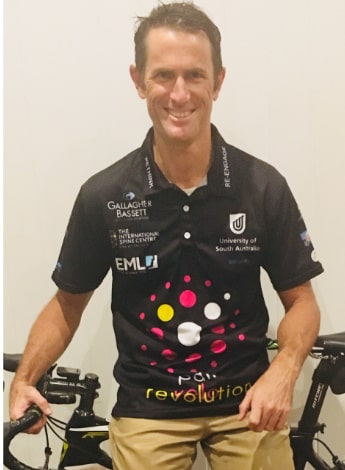
APA+U

The APA is advocating strongly to promote and improve access to physiotherapy services for all Australians. Two of the ways in which this can be achieved is through telehealth services and clear career pathways. InMotion speaks to two physiotherapists about their experiences in these areas.
Telehealth and you
APA member and online physiotherapist Karen Finnin gives wieghs in on the importance of advocating for telehealth services.
Karen’s practice, Online.Physio, is an entirely online physiotherapy practice assessing, diagnosing and treating musculoskeletal injuries. This is facilitated through webforms, digital imaging, secure messaging and video consultations.
Advocating for private health insurance rebates for video consultations will support physiotherapists to deliver accessible, timely healthcare, and provide clients with a sustainable, accessible treatment mode. This is particularly relevant to patients beyond metropolitan areas, as APA member Karen Finnin says, ‘there is absolutely no question that telehealth creates access to physiotherapy for people who would otherwise not have had access for geographical reasons, namely those in rural and remote areas.

Karen Finnin
‘There are other populations; however, for whom telehealth is also important. For individuals with chronic illnesses, telehealth provides a way to seek treatment without the fatigue of travel to a clinic or hospital. Those who are immune suppressed can seek treatment without risk of exposure to pathogens and unwell populations,’ she explains. ‘And for carers, parents or full-time workers, telehealth allows consultations to be more convenient and less time-consuming. This leads to an increased likelihood to seek professional, tailored advice as opposed to Googling.’
The APA is continually advocating on behalf of members to secure contemporary National Physiotherapy Service Descriptors (NPSD) that reflect current modes of practice. Karen says there is no question that a lack of recognition of telehealth consultations for rebate purposes is currently one of the largest barriers for telehealth adoption.
‘There is a growing base of research that shows that outcomes for telehealth interventions are the same, if not better, than in person care. As technologies and user friendliness improve, it stands to reason that we can improve on these outcomes,’ Karen says. ‘Physiotherapy via telehealth educates patients in the self-assessment and self-management of their health condition. Better educated and more proactive patients are likely to have better outcomes.’ And that is why the APA is pushing for the inclusion of private health insurance rebates for video consultations. The purpose of the NPSDs is to provide the physiotherapy profession, consumers and third party insurers with a description of the services provided by physiotherapists and physiotherapy services.
Telehealth is a complex landscape but with a strong membership base, the APA is equipped to navigate and guide members through this and drive the profession through change. Karen encourages physiotherapists to ‘approach it with an open mind. Like “real” books and digital books, in-person physio and telehealth physio can happily co-exist, and each has an important place in our profession.’
Lots to gain in the discipline of pain
Matt Forster’s passion for furthering his knowledge about pain began after he noticed some patients with similar complaints responded to treatment while others did not. Questioning why that was has set Matt on a path that is leading him to pain specialisation.
Having seen the opportunities for physiotherapists to have a greater understanding about just how complex pain is, Matt Forster wanted to be ahead of the pack. As the research regarding the influence of neurophysiological and psychosocial factors contributing to persistent pain progressed, Matt saw the potential to not only increase his own knowledge about pain but also to help educate his patients. It was a lightbulb moment that has led the APA Pain Physiotherapist to seek specialisation via the APA Career Pathway.
The importance of refining his skills and advancing his career had always been important to Matt, and as his knowledge of pain science grew so too did the education pathway and opportunities around him. Having signed up to become a member of the APA when he graduated from the University of Queensland in 1996, Matt went on to work in both the public and private sectors and undertook a master’s degree in pain management at the University of Sydney before becoming a tutor in the master’s program. In 2014, Matt was approached to be the Queensland representative of the newly developed national APA Pain network—and he jumped at the chance.

Matt Forster
Matt’s interest in pain fundamentally came about when he was working in a private practice on the north side of Brisbane. There, his patient cohort would often present with similar musculoskeletal conditions; some would respond well to treatment while others would not. This perplexed Matt and propelled him to seek answers through further education.
‘I used to think “Oh I’m doing all this good manual therapy, good exercise prescription and rehabilitation that I learnt at university” and I would wonder why one person was getting better but another person wasn’t,’ Matt says. ‘I was doing similar types of treatment but not getting the same outcomes. And it was about that time, in the early 2000s, that I started to go to a couple of Explain Pain courses with David Butler. That filled some if the gaps in my knowledge about some of the differences in presentation with some musculoskeletal pain conditions, and he started to help me to look at some pain presentations in a different way.
‘As my interest developed, I started my master’s degree in pain management, looking at different aspects of persistent pain including pharmacology, psychology, intervention approaches and social factors,’ Matt says. ‘I definitely wanted to have a broader health education—I considered doing a musculoskeletal master’s degree but I wanted to do something a bit different.’
Matt joined the national APA Pain network which then began bringing together like- minded peers to help map out a career pathway for pain physiotherapists. ‘When applications opened for titling in pain a couple of years ago…I applied straight away. I think I was one of the early people to go through that process. I was always interested in titling and specialisation but the way the College [Australian College of Physiotherapists] was set up at that time, the specialty area I was interested in [pain] wasn’t available.’
All that changed for Matt when the College opened up its 12-month pain specialisation program, with the first cohort of registrars starting in August this year. Matt hopes to be able to use his knowledge to help younger and more junior physiotherapists to better manage complex or persistent pain in their clients, and take on clients referred to him by other physiotherapists for educational and psychologically informed functional rehabilitation interventions. The additional qualification via the Career Pathway, which is only available to APA members, will also help Matt gain further recognition for his knowledge, skills and expertise.
‘I’ll always continue to be a member of the APA. I think it’s important to be involved in your profession, I find it personally rewarding. It’s really good
from an educational perspective to have professional development opportunities that come through the APA, especially in an area such as pain where the research is showing the benefit of education and exercise, while also assisting with the psychological and social management of pain. Having the APA there that respects and understands that clinical pathway is really important.’
Matt is also a member of the Pain Revolution and has cycled the annual event each year since it began in 2017. Matt will once again sign up for the Pain Revolution Rural Outreach seven-day cycle from Geelong in Melbourne to Wangaratta in rural Victoria in March 2020.
© Copyright 2025 by Australian Physiotherapy Association. All rights reserved.





